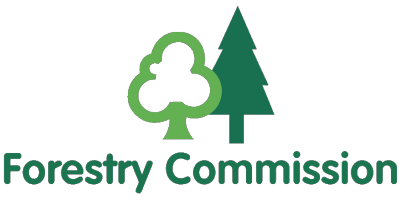Managing the business of forestry with Geographic Information Systems
The implementation of Esri’s ArcGIS platform has enabled The Forestry Commission to make cost savings in excess of £1 million a year from more efficient map production. Use of this enterprise-wide GIS also enables managers to make better informed decisions and publish visitor information for the general public more easily.
The Customer
The Forestry Commission protects and manages over a million hectares of land and 24,000 kilometres of roads across the UK, and researches innovative ways to use and care for Britain’s woodland.
It balances these tasks with commercial objectives, working with private landowners and national businesses, whilst producing approximately five million tonnes of wood each year for sale.
Employees can produce forestry maps from scratch 50% more quickly and update them 90% faster than before
61% of managers say that GIS has had a positive impact on the quality of their management decisions
GIS provides improved mechanisms for sharing information with the general public, partners and regulators
The Challenge
With apparently conflicting responsibilities, the Forestry Commission wanted to use GIS at the heart of its operations to bring its data together, improving forecasting and efficiency.
We are maximising the value of all Forestry Commission employees past and present to deliver the best possible service to citizens
Ben Ditchburn – Head of Forestry Information Systems
The Solution
Using a single database of spatially related data throughout the organisation, staff are connected and empowered to make strategic decisions about the land: forecasting timber production and forest development, protecting habitats, and helping people enjoy British woodland.
Esri has supported our GIS-based revolution in working practices every step of the way
Ben Ditchburn – Head of Forestry Information Systems
The Benefits
The partnership between The Forestry Commission and Esri UK has reaped many rewards over the years. “We were impressed by Esri’s working culture, which has always been about improving things in the long term,” says Ben Ditchburn, Head of Forestry Information Systems. “Esri has supported our GIS-based revolution in working practices every step of the way.”
Improved strategic decision making
The centralised geodatabase removes duplication and gives a shared view of operations. 61% of managers say GIS has had a positive impact on the quality of their management decisions, which are now based on hard facts. Sophisticated modelling and forecasting tools demonstrate the effects of decisions, “We can use GIS to predict the likely consequences of global warming on trees and how much carbon they can request, changes to grants or changes to the Common Agricultural Policy,” says Ditchburn. “We can then present evidence to the central government ministers responsible for decision making at the highest level.”
Improved services
Information about footpaths, picnic sites, biking trails etc is published online. “Once you have a central GIS data store with information relating to assets and activities, you can present it to members of the public quickly, transparently and cost-effectively,” says Ditchburn. Planning consultations are better informed too: “Because of GIS, the plans that our front line staff prepare and present look every bit as good as a professional architect’s drawings, which is fantastic for our credibility and selling our skills”, says Ditchburn.
Improved efficiency
A comprehensive electronic inventory of British woodlands “has reduced the time we spend drawing maps from scratch by 50% and enables us to update them 90% faster”, says Ditchburn, “delivering savings of more than £1 million every year”. Sophisticated GIS modelling shows how forests may change over time. “Our cartographers and landscape specialists could previously take a week or more to draw a single 3D landscape of the forest,” says Ditchburn. “Now, we can generate these images in a matter of minutes.”
Shared services
Service sharing is a key government objective, and because 80% of public sector data is spatially-related, GIS is an essential unifying force. For example, when trees need to be felled, the commission informs Natural England and the public, online, of temporary access restrictions. Ben Ditchburn estimates a manual process would be four times slower and that a bespoke system would have been hugely expensive, “Instead, we were able to start exchanging information electronically using our existing GIS system, spending just a fraction of this money on modifications.”
Demonstrating regulatory compliance
Compliance is increasingly complex, but GIS can be used to demonstrate adherence efficiently and professionally. Ben Ditchburn explains that “If you can logically describe and report on your assets, activities and plans for the future, you are in much stronger position to meet new regulations and directives.”
Improved business continuity
The cumulative experience of generations of employees is stored centrally for the benefit of colleagues, partners and citizens, now and in the future. It can be passed on more easily and appropriately than when it was held on paper or in people’s heads, helping new employees work effectively from day one.
Effective budgeting
Using inventory and GIS modelling, the Forestry Commission can estimate an area’s income from timber sales in minutes, rather up to eighteen man-months. Knowing likely income patterns “means we can set realistic targets for planting, conservation work and other operations and help minimise the cost of our activities for the tax payer”, says Ditchburn



